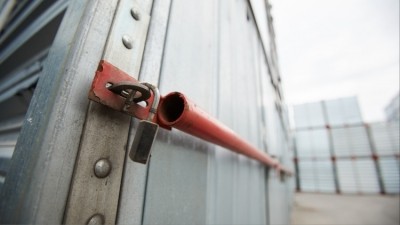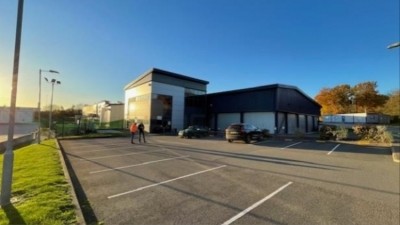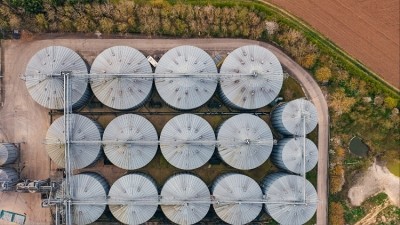Short read
Improving worker safety with gas detectors

In an industry like food manufacturing, where temperature control is vital, companies rely on refrigeration, heating, ventilation and air conditioning (HVAC) systems to maintain temperatures, reduce humidity and improve air quality. When those systems suffer from gas leaks, the results can be highly hazardous for employees and put manufacturing processes and stored products at risk.
With the average HVAC system losing 20% of its refrigerant gases every year on average, there is also a tremendous impact on climate change.
Unseen dangers
Refrigeration systems are incredibly important for keeping foodstuffs stored at the right temperatures, ensuring products don’t perish and are safe for consumption. Unfortunately, they are also susceptible to leakages. The gases that escape are hazardous to human health, posing a danger to employees, while also being far more damaging to the environment than CO2. Additionally, when leakages occur, refrigeration systems work far less efficiently, increasing the cost of running them.
A key issue for food manufacturers that use refrigeration and HVAC systems is that the leaks often go unnoticed. As refrigerant gasses have no odour, taste or colour, they are not something that workers can easily sense, as they could with smoke for example.
As a result, in most cases, a leak is not identified until 60% of the gas has escaped. For workers in the vicinity, the symptoms of exposure can include coughing, headaches, skin and eye irritation, breathing difficulties, nausea and vomiting. In areas of high refrigerant gas concentrations, there is a risk of unconsciousness, asphyxiation and, with flammable refrigerants, fire.
While refrigeration failure resulting from gas leakage can cause significant disruption for food manufacturers, smaller leaks can also have an impact on the bottom line. When gas is lost from a system, it operates less efficiently and requires more energy to control temperatures. According to The Carbon Trust, the average UK HVAC system loses 20% of its gas each year, decreasing efficiency by around 11% and pushing up energy consumption by the same amount. The savings for early detection could be considerable.
Gases released are hydrofluorocarbons (HFCs), pollutants that deplete the ozone layer and have a global warming potential (GWP) a thousand times more destructive than carbon dioxide. Known as fluorinated gases (F-gases), they are highly regulated. Those which have a GWP greater than 2,500 are prohibited from being used to service or refill refrigeration systems with a refrigerant charge size of 40 tonnes of CO2 equivalent or more. At the same time, any system containing F-gas equivalent to 500 tonnes of CO2 must be fitted with a leak detection system.
There are also strict regulations on when gas leak checks have to be conducted. Depending upon the tonnage of CO2 equivalent, the frequency can range from every 12 to every 3 months. Non-compliance can result in fines of up to £200,000. The UK is currently assessing its F-gas regulations and may follow a similar path to the EU which is to ban the use of HFCs and other F-gases in 2050.
Intelligent leak detection
Food manufacturers must be proactive in detecting leaks to mitigate the risks to health, temperature control, cost efficiency and the environment. Today, this can be achieved with accuracy and efficiency, thanks to the newest technologies. Modern gas detection sensors have built-in intelligence and sophisticated capabilities that successfully tackle the risks of both toxic and non-toxic gas leaks.
With high-precision semiconductor or infrared sensing elements configured to identify gases, leaks can be detected over large spaces and in extreme environments, like cold storage. Additionally, they can be pre-calibrated to defined mixtures of refrigerant and air, and have their sensitivity adjusted for the environments where they operate. At the same time, integrated active filters mean gases not of interest are ignored, increasing the sensor’s operational longevity.
Besides detecting leaks, modern sensors are also designed to quickly alert people within the area, ensuring worker safety and swift repair. LEDs show the presence and status of the sensors and there are audio-visual signalling alarms to warn employees in the vicinity. These advanced gas detection systems can also be integrated with other systems. This provides a more proactive way to conduct monitoring while enabling sensors to be remotely accessed online or directly monitored when combined with a building management system (BMS). As a result, food manufacturers can benefit from improved diagnostics and communication.
The latest gas detection systems provide considerable benefits for food manufacturing companies that have large refrigeration systems installed. They can quickly alert employees to the presence of potentially hazardous gases, enabling swift evacuation; leakages and their causes can be tackled quickly, preventing major equipment damage and downtime; the climate-changing impact of F-gas leaks is reduced; and companies can forgo the financial burden of operating an inefficient system. Indeed, with regard to the latter, modern, self-contained, single-fixed sensors can deliver a return on investment in less than two years.
In other news, construction has begun on a new head office, distillery and distribution centre for Warwickshire-based Alcohols Limited.

















